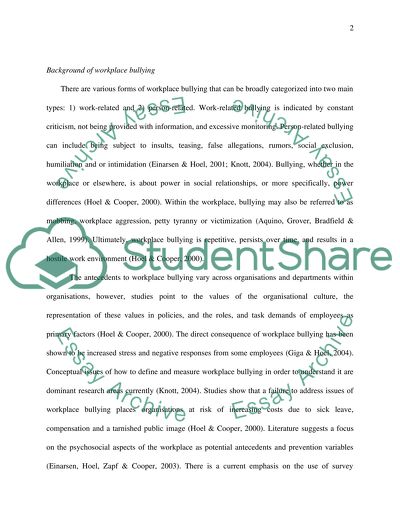Cite this document
(“Workplace bullying Essay Example | Topics and Well Written Essays - 2250 words - 1”, n.d.)
Retrieved from https://studentshare.org/miscellaneous/1516669-workplace-bullying
Retrieved from https://studentshare.org/miscellaneous/1516669-workplace-bullying
(Workplace Bullying Essay Example | Topics and Well Written Essays - 2250 Words - 1)
https://studentshare.org/miscellaneous/1516669-workplace-bullying.
https://studentshare.org/miscellaneous/1516669-workplace-bullying.
“Workplace Bullying Essay Example | Topics and Well Written Essays - 2250 Words - 1”, n.d. https://studentshare.org/miscellaneous/1516669-workplace-bullying.


